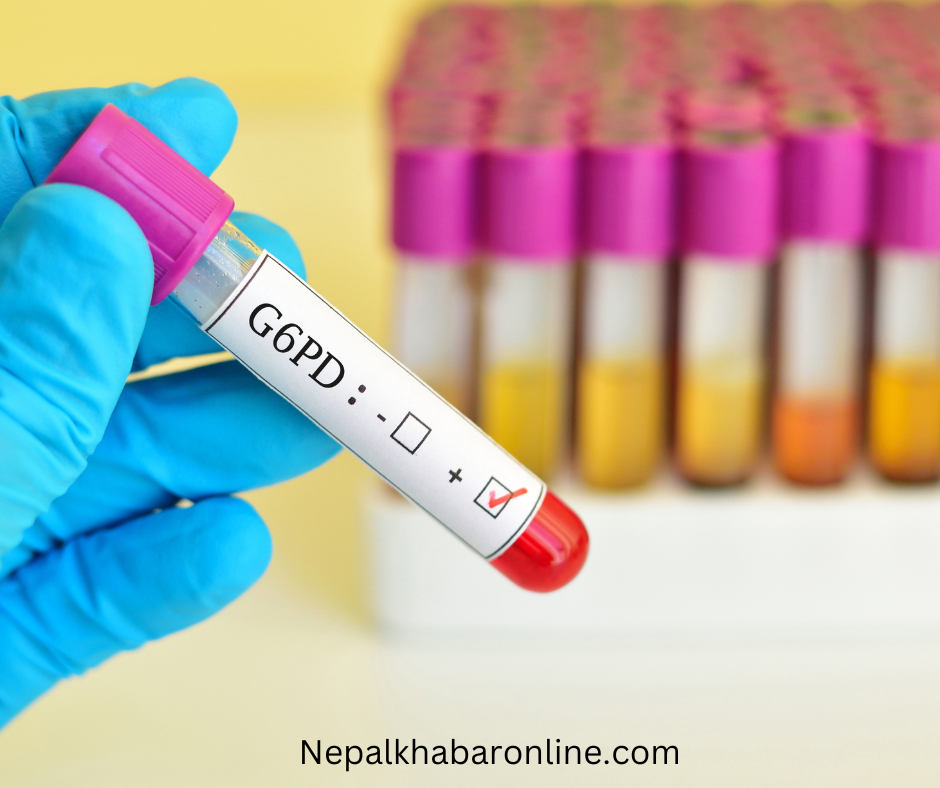G6PD Test & 8Symptoms of G6PD Deficiency
The glucose-6-phosphate dehydrogenase (G6PD) enzyme Or G6PD test in the blood is measured by a G6PD test. An enzyme is a protein that is essential for cell function. Let’s discuss in this article the different aspects of the G6PD and G6PD tests.
What is G6PD?
The enzyme G6PD stands for glucose-6-phosphate dehydrogenase. It’s a sort of housekeeping protein with a variety of functions in the body. It protects your cells from the harmful effects of reactive oxygen species.
Free radicals are another name for reactive oxygen species. They’re unstable compounds that react easily with others. Your body produces them naturally as part of its functions, but too many might be hazardous. The G6PD enzyme produces substances that prevent them from accumulating in your bloodstream.
Free radicals can harm your cells if they accumulate. Free radicals are particularly damaging to red blood cells. Hemolysis occurs when your red blood cells break down quicker than they are created due to a deficiency of G6PD. Hemolytic anemia occurs when your body is unable to compensate for the rapid loss. Hemolytic anemia is harmful because it deprives your organs and tissues of oxygen

What Are the Symptoms and Signs of G6PD Deficiency?
The majority of people with G6PD deficiency have no symptoms. Others may experience hemolytic anemia if many RBCs are destroyed.
These are some examples:
-Pale skin (in darker skin, paleness in the mouth, with focus on the lips or tongue is seen)
-Extreme fatigue or lightheadedness
-Rapid heart rate
-Breathing too quickly or too quickly
-Breathing too quickly or too quickly
-A splenic enlargement
-Dark, tea-colored urine
-Mild symptoms usually do not necessitate medical attention. Anemia will improve as the body produces new red blood cells. If the symptoms are severe, a child may require hospitalization.

What does a G6PD test entail?
G6PD aids the efficient functioning of red blood cells (RBCs). It also shields them from potentially toxic by-products that build up when your body fights infection or as a result of some treatments. A deficiency of G6PD may render RBCs more susceptible to hemolysis, which causes them to break down.
A G6PD test is a basic blood test that takes a sample of your blood. It’s usually requested to check for G6PD deficiency.
Why G6PD is necessary?
A mutation, or change, in your G6PD gene, causes G6PD deficiency, which is a hereditary disorder. Because this gene directs your body to produce the G6PD enzyme, a mutation will reduce the amount of this beneficial protein in your body.
G6PD deficiency does not always result in additional health issues. Anemia or issues with your red blood cells are not caused by a deficit alone. Individuals who already carry this mutation, on the other hand, may develop new symptoms as a result of external factors.
If you exhibit symptoms of hemolytic anemia, you may need a G6PD test (hemolytic symptoms). Unless you engage with a trigger, you usually do not acquire hemolytic symptoms. Some of the triggers of hemolytic symptoms include:
- Bacterial or viral infections
- Beans fava (favism).
- Antibiotics, antimalarials, and nonsteroidal anti-inflammatory medicines
The following symptoms may indicate hemolytic anemia:
- Fainting (syncope).
- Fatigue.
- A fast heartbeat (heart palpitations).
- Breathing problems (dyspnea).
- Urine that is reddish-brown in hue.
- Skin that is washed out or pale.
- Yellowing of skin and eyes (jaundice).
Must read: Vitamin Deficiency: 5 main Treatment and Symptom
Importance of G6PD on babies
A G6PD test may be required for babies who have persistent jaundice. Jaundice is typical in neonates, but if it persists for more than two weeks with no evident cause, your doctor may suggest a G6PD test. If you have a family history of G6PD deficiency, your infant may also be tested.
What is the prevalence of G6PD deficiency?
G6PD insufficiency is a rather frequent condition. G6PD insufficiency is estimated to affect 400 million people worldwide, according to experts. G6PD insufficiency is common, however, most people are unaware of it.
Men are more likely than women to have symptomatic G6PD insufficiency. If you have Asian, African, or Mediterranean ancestry, you’re more likely to have the deficit.
What factors put you at risk for G6PD deficiency?
You may be more susceptible to G6PD deficiency if you:
- African-American
- Middle Eastern heritage
- A family history of the disease
- Male
It is not necessary to have one or more of these risk factors to have G6PD deficiency.
What factors could influence my test results?
If you take this blood test during or immediately after a hemolysis episode, the result may be falsely normal. Because most of the blood cells with greater G6PD deficiency (the older ones) have already been destroyed, the surviving blood cells are not, or are not yet, G6PD-deficient. If the doctor believes in having a false-negative result, the test must be done again after 3 months. One would have had enough time by this point to create blood cells of different ages.